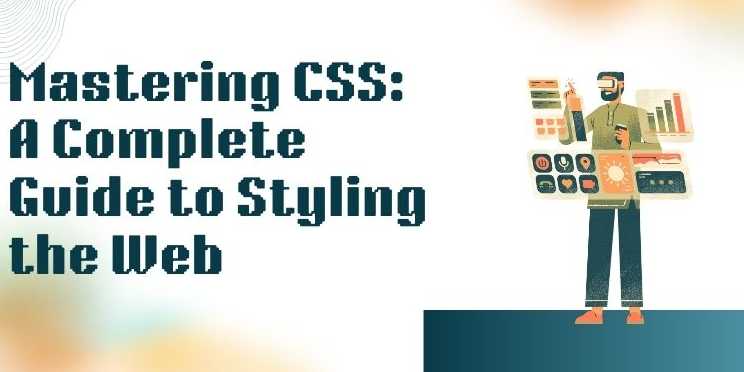Mastering CSS: A Complete Guide to Styling the Web

Chapter 6: Responsive Design & Advanced Features
In this final chapter, you'll learn how to build responsive
layouts that look great on any screen size, apply animations and
transitions, use CSS variables, and even get started with preprocessors
like Sass for scalable styling. This is the finishing layer that takes your
UI from good to great — and prepares it for production.
🧠 Why This Chapter
Matters
Modern users access websites on phones, tablets, laptops,
and large displays. You need:
- Fluid
layouts that adapt
- Clean,
organized CSS using variables and Sass
- Transitions
and animations that enhance (not overwhelm)
- Optimized,
validated stylesheets for production
Let’s future-proof your CSS!
✅ 1. CSS Media Queries —
Responsive Layouts
Media queries allow you to apply different styles
based on screen size or device type.
@media
screen and (max-width: 768px) {
.container {
flex-direction: column;
}
}
|
Breakpoint |
Device Type |
|
max-width: 768px |
Tablets and smaller |
|
max-width: 480px |
Smartphones |
|
min-width: 1024px |
Desktops |
✅ Combine with flexbox or grid
for mobile-first responsive design.
✅ 2. Fluid Layouts (Percentages
& Viewport Units)
Use flexible units like %, vw, vh, and em instead of px.
.hero
{
width: 100%;
height: 60vh;
padding: 2vw;
}
|
Unit |
Description |
|
% |
Percentage of parent |
|
vw |
1% of viewport width |
|
vh |
1% of viewport height |
|
em |
Relative to parent font size |
|
rem |
Relative to root (html) font size |
✅ 3. Flexbox & Grid — Layout
Power Tools
🔹 Flexbox
.container
{
display: flex;
justify-content: space-between;
align-items: center;
}
✅ Great for navbars, cards,
forms.
🔹 Grid
.container
{
display: grid;
grid-template-columns: repeat(3, 1fr);
gap: 20px;
}
✅ Ideal for image galleries,
dashboards, and multi-column layouts.
✅ 4. Transitions & Animations
🔹 Transitions (hover
effects)
button
{
transition: background-color 0.3s ease;
}
button:hover
{
background-color: #ff5722;
}
🔹 Keyframe Animations
@keyframes
slideIn {
from { transform: translateX(-100%); }
to {
transform: translateX(0); }
}
.panel
{
animation: slideIn 1s ease-out;
}
|
Feature |
Example |
|
transition |
Smooth change between states |
|
animation |
Keyframe-based custom behavior |
|
transform |
Movement, scale, rotation |
✅ 5. CSS Variables (Custom
Properties)
Define reusable values in your CSS:
:root
{
--primary-color: #007bff;
--spacing: 16px;
}
.button
{
background: var(--primary-color);
padding: var(--spacing);
}
✅ Makes your design system
flexible and consistent.
✅ 6. Sass (CSS Preprocessor
Basics)
Sass adds logic and organization to your stylesheets.
🔹 Install Sass
npm
install sass
🔹 Sass Features
$primary-color:
#3498db;
.btn
{
background: $primary-color;
&:hover {
background: darken($primary-color, 10%);
}
}
|
Sass Feature |
Benefit |
|
Variables |
Store colors, sizes, breakpoints |
|
Nesting |
Cleaner, logical CSS structure |
|
Mixins & Functions |
Reusable styles and logic |
|
Partials & Imports |
Organize code into multiple files |
✅ 7. Production-Ready CSS Tips
🔹 Minify Your CSS
Use tools like:
- cssnano
- clean-css
- Online:
https://cssminifier.com
🔹 Remove Unused CSS
Use tools like PurgeCSS or UnCSS to strip
styles you’re not using.
✅ Browser Compatibility
Always test styles across browsers:
- Chrome
- Firefox
- Safari
- Edge
✅ Use Can I Use to check CSS feature
support.
🔹 Validate CSS
Use W3C CSS Validator to catch syntax errors.
✅ Recap Table: Responsive &
Advanced CSS
|
Feature |
Purpose |
|
Media Queries |
Apply styles for different screens |
|
Flex/Grid |
Modern layout systems |
|
Transitions |
Smooth hover effects |
|
Keyframes |
Animate properties with control |
|
CSS Variables |
Centralized styling values |
|
Sass |
Modular, DRY, and maintainable CSS |
|
Minification |
Smaller file sizes for faster loading |
|
Validation |
Catch syntax bugs before production |
FAQs
1. What is the difference between inline, internal, and external CSS?
Inline CSS is written inside HTML tags, internal CSS is placed within a <style> tag in the head, and external CSS is stored in a separate file and linked to the HTML. External CSS is preferred for maintainability.
2. What is the cascading order in CSS?
CSS applies rules in a cascading manner: browser default → external → internal → inline. Specificity, importance (!important), and source order also affect which styles are applied.
3. What is the box model in CSS?
The box model describes how elements are structured with content, padding, border, and margin. Understanding it is essential for layout and spacing.
4. What is specificity in CSS?
Specificity determines which rule takes precedence when multiple rules target the same element. Inline styles > ID selectors > Class selectors > Element selectors.
5. What is the difference between Flexbox and Grid?
Flexbox is best for one-dimensional layouts (row or column), while Grid is suitable for two-dimensional layouts (rows and columns together).
6. How do media queries work in CSS?
Media queries apply styles based on device conditions like screen width. They are essential for creating responsive websites.
7. What are pseudo-classes and pseudo-elements?
Pseudo-classes like :hover and :focus apply styles based on user interaction. Pseudo-elements like ::before and ::after style specific parts of an element.
8. Why should you avoid using !important frequently?
Using !important overrides all other rules, which can make debugging harder and affect maintainability. Use it only when absolutely necessary.
9. What tools can enhance writing CSS?
Tools like SASS, LESS, Tailwind CSS, and PostCSS help in writing cleaner, more scalable CSS with features like nesting, variables, and mixins.
10. How can CSS impact website performance?
Efficient CSS can improve load time and user experience. Avoid unnecessary styles, minimize CSS files, and use compression tools like cssnano.


Comments(0)